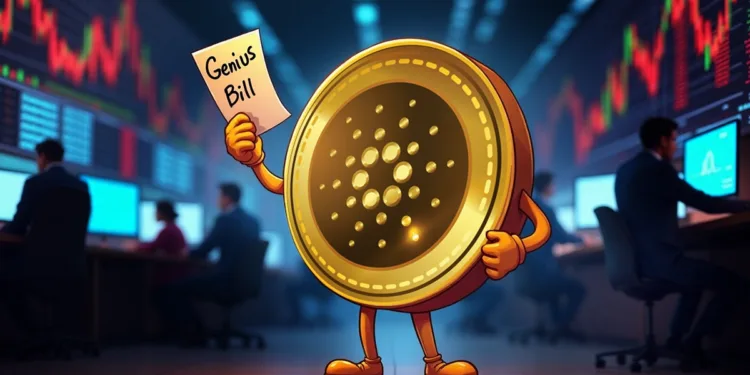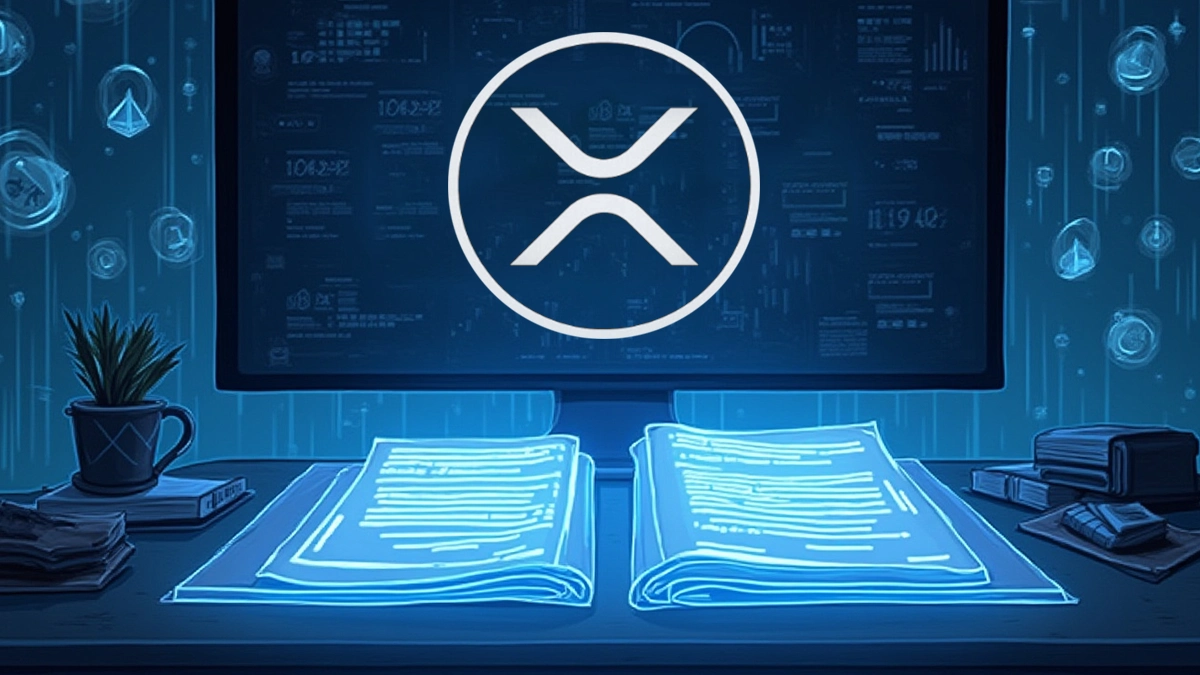- Proposed U.S. bill threatens yield-bearing stablecoins and decentralization in DeFi.
- Cardano enacts on-chain Constitution, shifting governance to its active community.
- Despite falling DeFi TVL, Cardano sees strong growth in stablecoin adoption rates.
In a move that has triggered heated debate across the crypto landscape, a new U.S. legislative proposal referred to by critics as the “Genius Bill” seeks to ban yield-bearing stablecoins.
Supporters of decentralization argue the bill panders to traditional banking interests and threatens innovation in decentralized finance (DeFi). Many believe this is less about investor protection and more about reinforcing the dominance of banks in a rapidly shifting financial paradigm.
The legislation, seen as pro-bank and pro-dollar derivative, reflects a fundamental misunderstanding of blockchain technology and the risks posed by over-reliance on a single fiat currency in a globally interconnected economy. While the bill is presented as progress, critics argue it does the opposite suffocating the very systems built to challenge monopolistic finance.
A Threat to Retail and Innovation
Yield-bearing stablecoins are often compared to money market funds. They allow users to earn returns by participating in decentralized systems, without giving up control to banks. By labeling them as securities, regulators risk pushing retail investors back into the arms of institutions that failed them in the past. This regulation could serve as a protective measure not for consumers, but for “too big to fail” banks hungry for a return to financial centralization.
Despite their similarities to money markets, the bill treats these assets as high-risk securities. This decision could limit accessibility and force many platforms to either shut down or move offshore. It’s a significant blow to DeFi’s mission of open and permissionless finance. Consequently, it undermines retail sovereignty, while allowing traditional institutions to continue profiting from the same models now considered too dangerous for decentralized applications.
Cardano founder Charles Hoskinson addressed the concerns, stating the solution lies in passing two separate bills one focusing on stablecoins and another reforming securities law.
He acknowledged that yield-bearing stablecoins may be classified as securities under current law, but also highlighted the need for “light securities” frameworks. This statement reflects a more balanced, reform-driven approach, though many believe stronger advocacy is needed from industry leaders to prevent regulatory capture.
Would you like to buy some $charles token?
— Charles Hoskinson (@IOHK_Charles) May 24, 2025
Cardano Pushes Forward with Decentralized Governance
Amid this legislative tension, Cardano quietly achieved a major milestone: the successful enactment of its on-chain Constitution. Implemented on February 24, 2025, as part of the Voltaire era, this marked the full rollout of CIP-1694.
Governance has officially shifted from founding entities to the community, represented by over 1,220 Delegated Representatives (DReps), Stake Pool Operators, and a newly formed Constitutional Committee.
Cardano’s ecosystem continues to evolve, even in the face of market headwinds. According to Messari report, ADA’s price dropped by 22% in Q1, mirroring broader market trends. Transaction volumes also dipped, while network fees fell sharply. However, despite these setbacks, Cardano’s treasury balance in ADA rose 5%, reflecting confidence within the community.
Stablecoins Rise as DeFi Retreats
Interestingly, while DeFi’s Total Value Locked (TVL) on Cardano fell 29%, stablecoin adoption surged. The USD-backed USDM grew by 40%, and the newly launched USDA reached $7.2 million. This contrast suggests users are adopting a risk-off approach, favoring asset preservation over speculative activity.
Cardano’s top DeFi protocols, like Minswap and Liqwid, saw notable TVL declines but continue to innovate. Aggregators like DexHunter added leveraged trading and APIs, adapting to market demands.














